Founder's Letters: A Brief History of the International Street Medicine Symposium
As we approach the 18th International Street Medicine Symposium in Toronto this September, we thought it would be a good time to provide some background on our annual meeting. Around 2004, I was approached by a funder who wanted to support the replication of the “Operation Safety Net model” of street care. Although not entirely unique, it was one of only a few programs truly committed to full time medical street work. The first other program I learned about was Calcutta Rescue under the leadership of Dr. Jack Preger in India. When I visited Jack in December of 1993, the experience was an epiphany. I will never forget the feeling of realizing I was not alone. Prior to that, I thought I might be the only physician crazy enough to provide medical care under bridges. Even though Pittsburgh and Kolkata were radically different, the same forces of exclusion and the same passion for social justice were obvious. Not long thereafter, I learned of the Boston Healthcare for the Homeless program and the pioneering work of Jim O’Connell and his colleagues. After visiting them on street rounds, I knew this was a new field of medicine – even if it did not yet have a name.
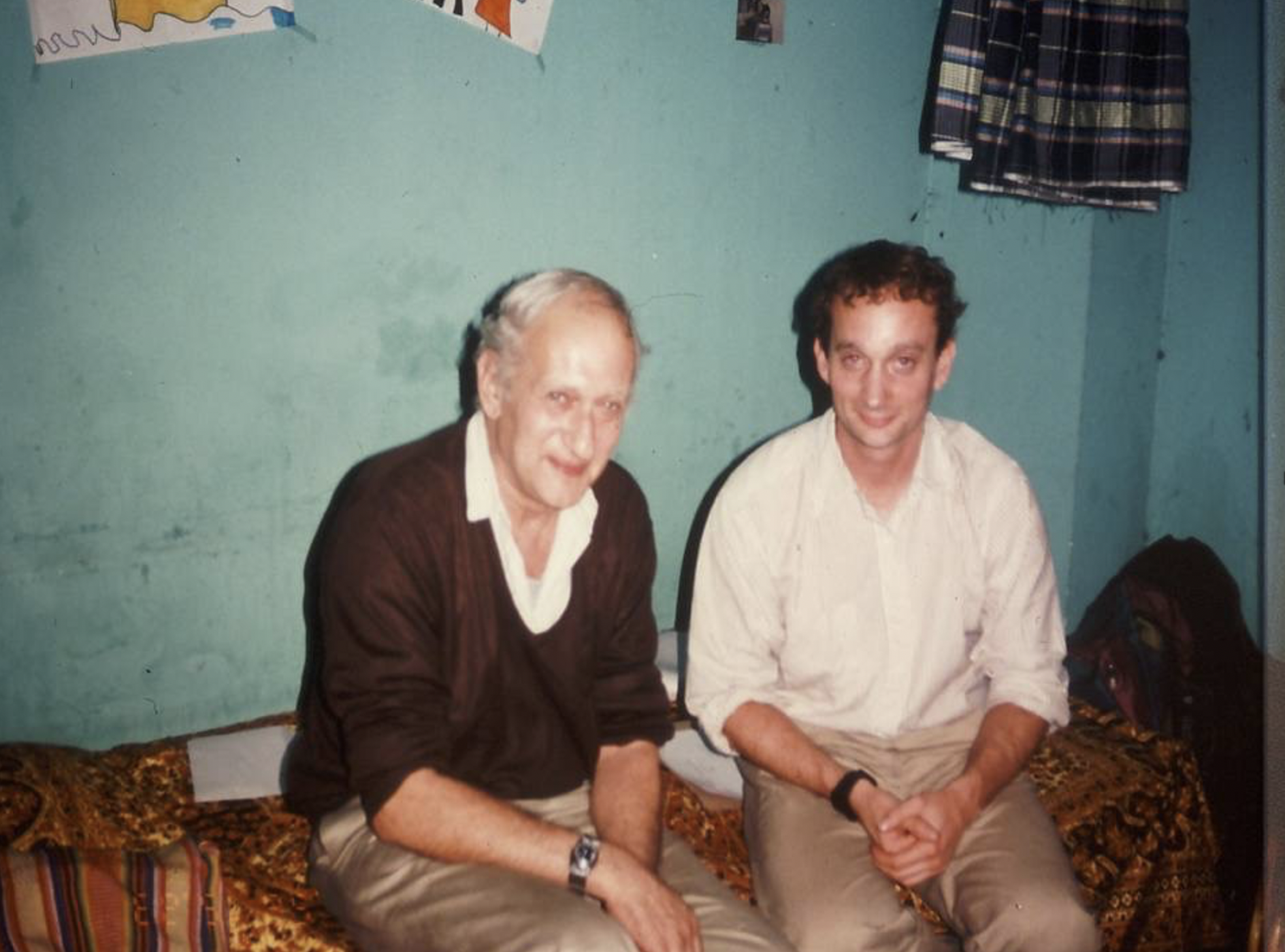 So, in 2004 I pondered the idea of using that grant opportunity to “replicate” our Pittsburgh model. Indeed, by that time I had traveled quite a bit and guided several new programs. But I felt it was arrogant to launch into the “replication business” (McDonald’s came to mind). What I felt deeply was that a movement was emerging. The energy of that movement was organic, grassroots, and not ready for a standardized template. Each community understood their unique needs and challenges, so I wanted to honor that dynamic. I asked the funders if I could, instead, create a gathering of the pioneers I knew who were working on their own streets. I’d noticed that whenever two or more street clinicians met each other, they had the same joy and validation I had experienced in Kolkata. If we could get together in one place, I knew something magical would happen. I got permission to use the grant for such a meeting and we began to plan for a symposium in Pittsburgh. It needed a name, so I decided to call our work “street medicine” and thus we hosted the first International Street Medicine Symposium in the fall of 2005.
So, in 2004 I pondered the idea of using that grant opportunity to “replicate” our Pittsburgh model. Indeed, by that time I had traveled quite a bit and guided several new programs. But I felt it was arrogant to launch into the “replication business” (McDonald’s came to mind). What I felt deeply was that a movement was emerging. The energy of that movement was organic, grassroots, and not ready for a standardized template. Each community understood their unique needs and challenges, so I wanted to honor that dynamic. I asked the funders if I could, instead, create a gathering of the pioneers I knew who were working on their own streets. I’d noticed that whenever two or more street clinicians met each other, they had the same joy and validation I had experienced in Kolkata. If we could get together in one place, I knew something magical would happen. I got permission to use the grant for such a meeting and we began to plan for a symposium in Pittsburgh. It needed a name, so I decided to call our work “street medicine” and thus we hosted the first International Street Medicine Symposium in the fall of 2005.
I remember specifically wanting a group of participants who were radically committed to the reality of those on the streets. I wanted people who would give their lives or freedom to the cause. People like Dr Preger, who had spent time in jail for his activism. This was going to be more than a gathering of content experts. This was going to be a revolution. I began to invite my heroes and was thrilled that every one of them said yes! It was a “Field of Dreams” moment with participants from across the US, Hawaii, Puerto Rico, as well as India and Chile. I remember watching them all eat lunch in our hospital cafeteria and thinking, “nobody else realizes it, but this is an historic occasion”. In all, I believe there were 17 programs represented. As I expected, everyone was thrilled to meet others who shared the same unique passion for street medicine.
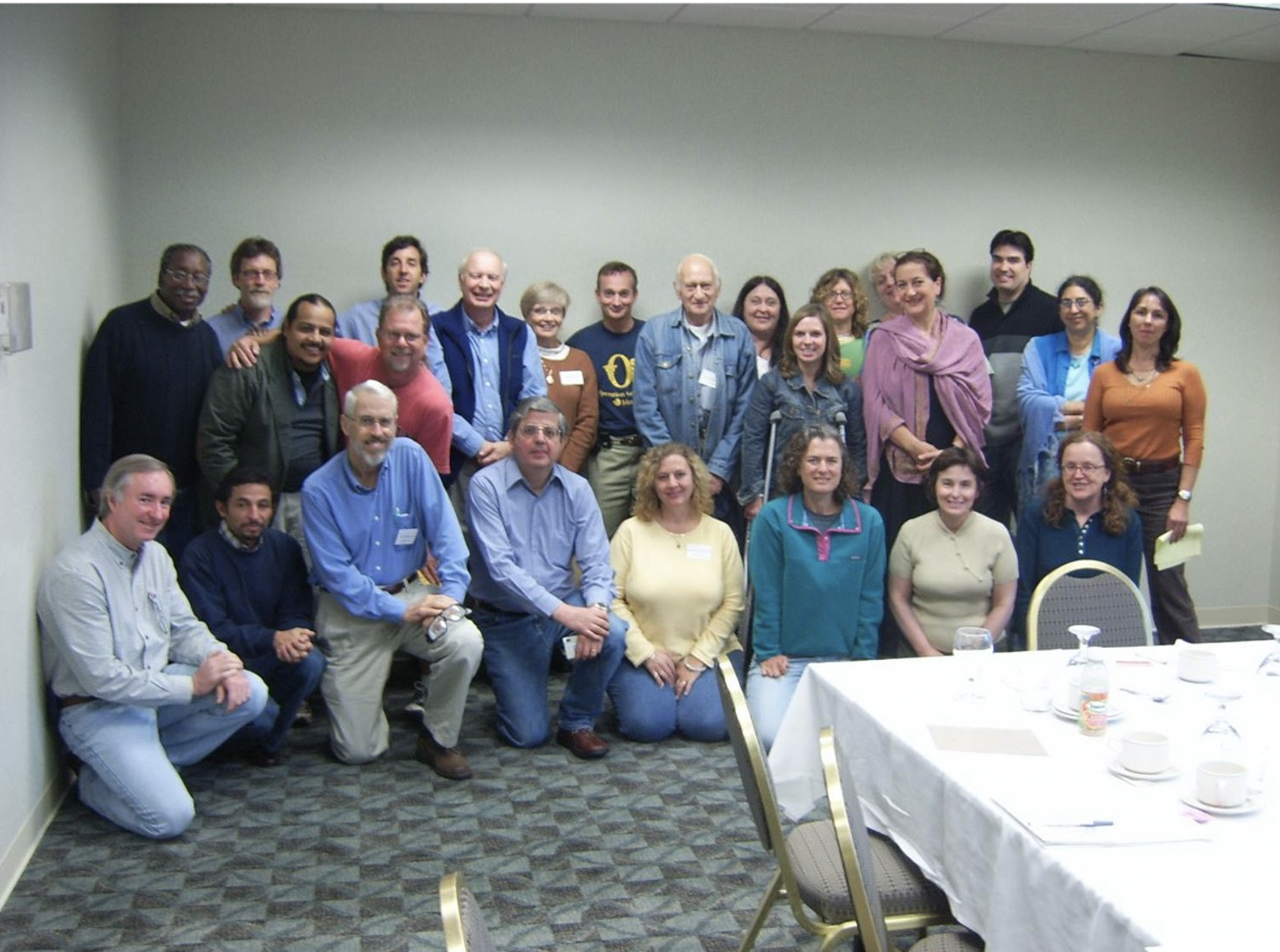 That first symposium was admittedly not a polished affair. I used my own computer and my son’s video game booted up instead of one of the power point presentations. But the informal atmosphere set a good tone for wonderfully intimate interactions. We used our local outreach workers to allow everyone to do street rounds. That was a precedent we continued to follow for several years until the meetings got too large. At the end of the three-day meeting, we spent some time summarizing our experiences. Everyone loved it and all dedicated themselves to attending future meetings. When asked if they wanted to create a formal organization, they preferred a more casual affiliation. The one other thing they agreed on was that they wanted to support student involvement. When they all left Pittsburgh, it was like seeing my family leave.
That first symposium was admittedly not a polished affair. I used my own computer and my son’s video game booted up instead of one of the power point presentations. But the informal atmosphere set a good tone for wonderfully intimate interactions. We used our local outreach workers to allow everyone to do street rounds. That was a precedent we continued to follow for several years until the meetings got too large. At the end of the three-day meeting, we spent some time summarizing our experiences. Everyone loved it and all dedicated themselves to attending future meetings. When asked if they wanted to create a formal organization, they preferred a more casual affiliation. The one other thing they agreed on was that they wanted to support student involvement. When they all left Pittsburgh, it was like seeing my family leave.
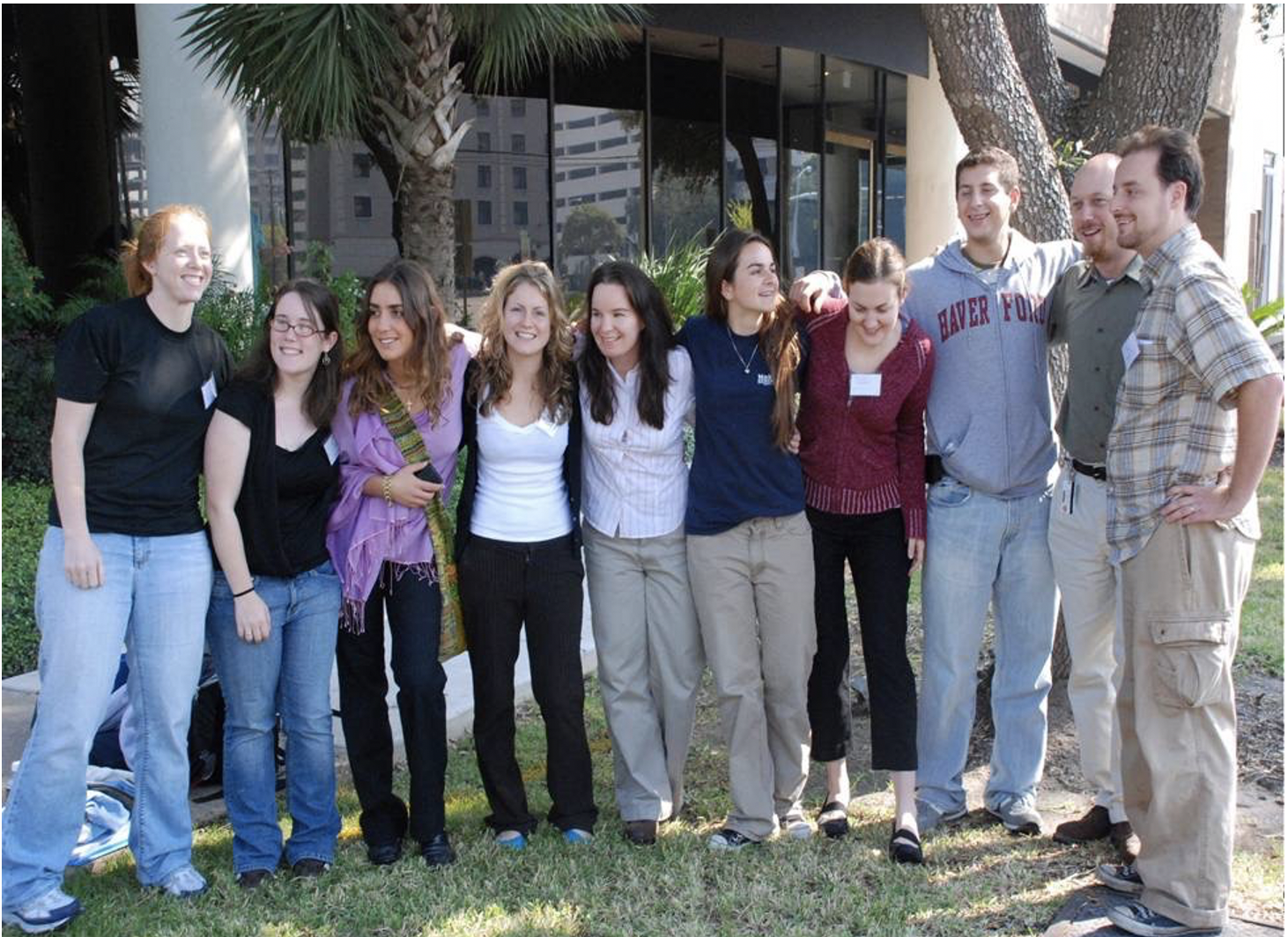 One of the thoughts we had about an annual meeting was that it would be a great opportunity to highlight the work of different cities. One of my former students, Dr. Mimi Doohan, was poised to start a new program in Santa Barbara and we decided to support her effort by having our second meeting there. She agreed to host us and provided a wonderful retreat site. The attendance was better, with new partners from Europe like Dr. Igor van Laere of the Netherlands, who later connected us to many of our future partners in Europe. Mimi was able to launch her program which continues to be one of the great sources of student leadership in the street medicine movement, now under the leadership of Dr. Jason Prystowsky. Dave Buck in Houston was one of the original leaders and so we chose his city for our third meeting. Our group had gotten bigger, so we had to divide ourselves up to see the various programs of Dave’s organization. One of my memories from that meeting was seeing students from the US, England and other countries sharing their love of street medicine. The third meeting in Houston seemed to solidify the momentum.
One of the thoughts we had about an annual meeting was that it would be a great opportunity to highlight the work of different cities. One of my former students, Dr. Mimi Doohan, was poised to start a new program in Santa Barbara and we decided to support her effort by having our second meeting there. She agreed to host us and provided a wonderful retreat site. The attendance was better, with new partners from Europe like Dr. Igor van Laere of the Netherlands, who later connected us to many of our future partners in Europe. Mimi was able to launch her program which continues to be one of the great sources of student leadership in the street medicine movement, now under the leadership of Dr. Jason Prystowsky. Dave Buck in Houston was one of the original leaders and so we chose his city for our third meeting. Our group had gotten bigger, so we had to divide ourselves up to see the various programs of Dave’s organization. One of my memories from that meeting was seeing students from the US, England and other countries sharing their love of street medicine. The third meeting in Houston seemed to solidify the momentum.
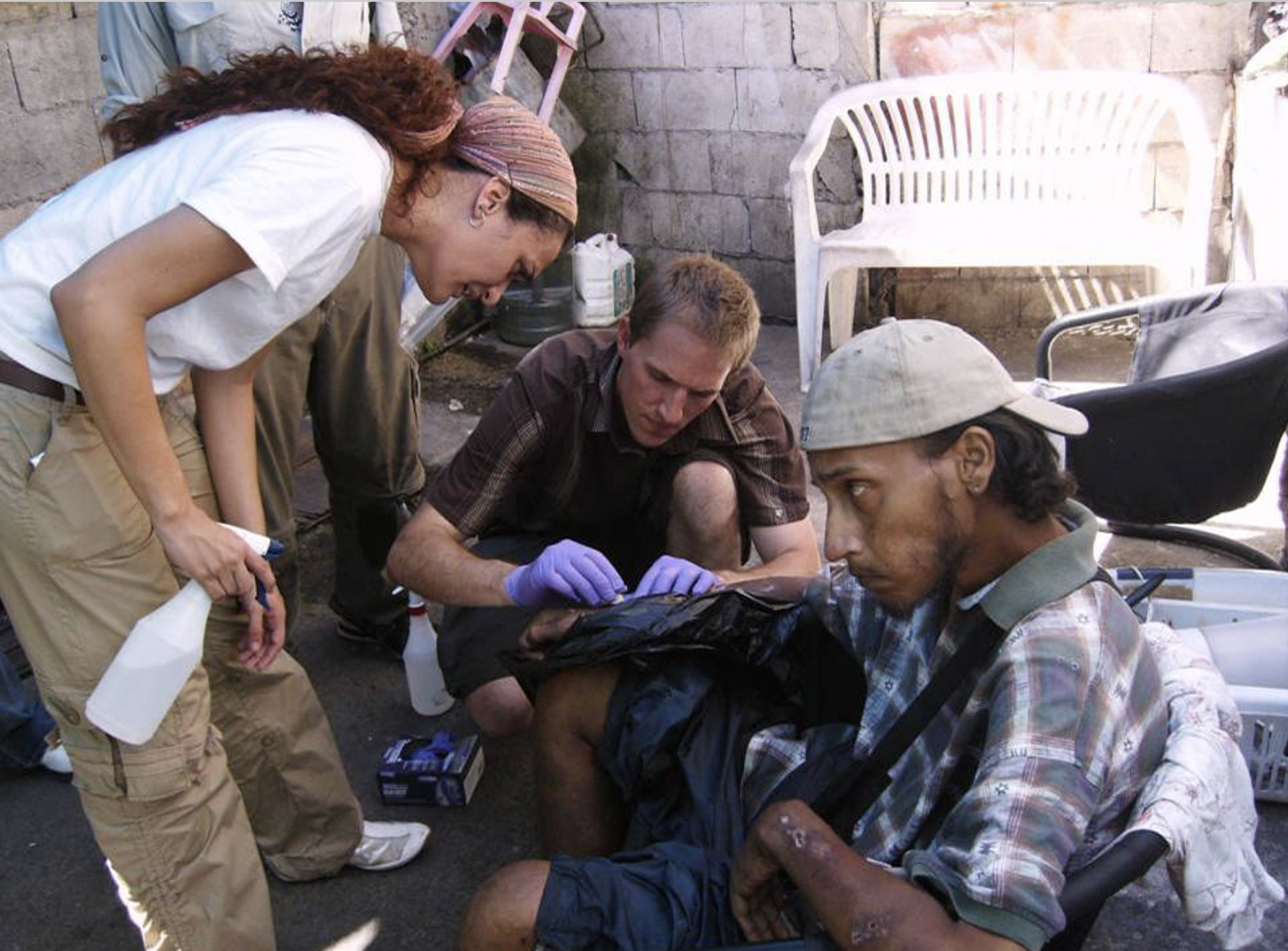 At the Houston meeting, Dr Preger challenged us to live up to the “International” part of our name, so we chose Puerto Rico for our fourth location. (though part of the US, many Puerto Ricans consider the island their own country) Dr. Jose “Chaco” Vargas-Vidot was a dynamic street medicine champion with an extensive program in San Juan. We were able to find a very affordable (hurricane season) beach side hotel for the meeting – which I felt the hard-working participants deserved. Despite the elegant surroundings, we had some of our most dramatic street rounding experiences. Over 50 participants were able to join local outreach staff as they delivered care on the streets and in “shooting galleries” where medical and harm reduction was provided to those injecting drugs. It was so raw that we needed to debrief many of the newer members afterwards. I recall thinking this was one of the most unusual situations to offer continuing medical education credit I could imagine.
At the Houston meeting, Dr Preger challenged us to live up to the “International” part of our name, so we chose Puerto Rico for our fourth location. (though part of the US, many Puerto Ricans consider the island their own country) Dr. Jose “Chaco” Vargas-Vidot was a dynamic street medicine champion with an extensive program in San Juan. We were able to find a very affordable (hurricane season) beach side hotel for the meeting – which I felt the hard-working participants deserved. Despite the elegant surroundings, we had some of our most dramatic street rounding experiences. Over 50 participants were able to join local outreach staff as they delivered care on the streets and in “shooting galleries” where medical and harm reduction was provided to those injecting drugs. It was so raw that we needed to debrief many of the newer members afterwards. I recall thinking this was one of the most unusual situations to offer continuing medical education credit I could imagine.
By now it was clear that the annual International Street Medicine Symposium had become the heartbeat of a movement. Each heartbeat brought in more participants from all over the world and sent them out energized and inspired by each other. The term “street medicine” was being embraced across the world. I recall thinking that as our work became “real”, the people we served might also become “real” to the public. Every time we met, I looked over the audience and thought of all the people who were now being directly served for the first time. I could visualize the people on the streets of Delhi and Detroit, Copenhagen and Columbus, Lagos and Los Angeles, Boston and Brazil. We were here as their representatives. It was our sacred duty for us to never forget that. The meetings were still under the direction of Pittsburgh Mercy’s Operation Safety Net (much credit to Linda Sheets), but it was becoming obvious to me that the movement would soon need its own non-profit organization. A core group of participants agreed with me, and we launched the Street Medicine Institute officially in 2009. It would be the new “home” for our movement and organizer for our annual meetings. Though we had no source of funding, we had a fierce determination to keep things growing.
Founding Street Medicine Institute board members like Dave Deci and Dave Buck had carried the weight of our movement from the beginning. With the arrival of Amanda Cook and Pat Perri, we launched into a new era of Institute-led symposiums. Salt Lake City was the first. We decided to charge a registration fee which I feared would discourage our humble audience. We not only survived that meeting but gained the confidence to finally go to Boston (a dream location) the next year, and Dublin the year thereafter. Pat Perri was the driving force behind those successful meetings as we expanded overseas. It has remained our goal to become truly global, but we have had to balance that dream with a selection process that prioritizes the cities best able to shoulder the weight of a now robust symposium. Notably, Harsh Mander from Delhi challenged us to engage and support the global south as we move forward. We intend to do so, and remain committed to the vision of a truly global street medicine movement. During the COVID 19 pandemic, board member Dr. Liz Frye and others salvaged the symposium by converting it all to a virtual platform. This allowed us to reach even more communities, but we dearly missed the magic of the face-to-face interactions.
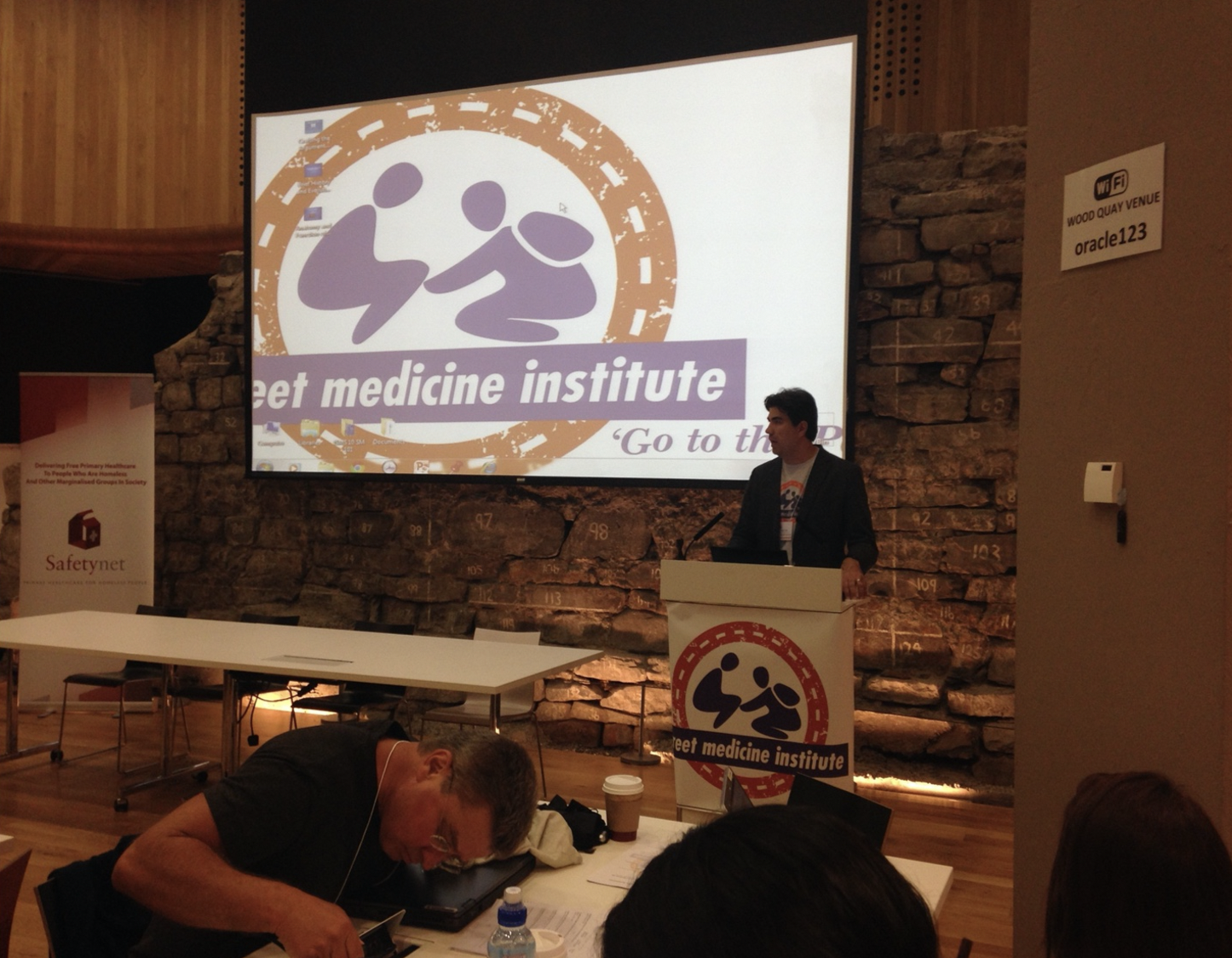 Some of the notable experiences from our annual International Street Medicine Symposium deserve to be highlighted. First of all, we’ve had some incredible keynote speakers. Jack Preger was our reluctant first speaker. His life’s work set the standard for courage, vision and fidelity to those experiencing unsheltered homelessness. For 12 years he had perfect attendance, quietly taking notes and making the occasional challenge for us to push harder to meet the needs of those we serve. Even though he is a very private person, Jack endured endless photos and the gushing enthusiasm of his admirers. I believe his continued participation itself was a testament to our fidelity to the cause. When he “retired” at the age of 90 we missed him terribly, though to everyone’s delight he made a guest appearance at our virtual symposium during the COVID pandemic. Other pivotal speakers were Chaco from Iniciativa Comunitaria in San Jaun who early on made a passionate and compelling argument for street medicine as a form of liberation medicine. He described the “unexploded dynamite of consequence” permeating our work (as per Pat Perri). Then medical resident Andrea Pekarkova from Prague made us rise to our feet in applause at her youthful courage. Jeff Olivet powerfully challenged us to embrace activism as well as service. Other wonderful speakers included Jim O'Connell, Harsh Mander, Sister Mary Scullion, John Lozier, Dr. Xavier Emmanuelli, Father Jon Stephens, Craig Rennebohm and Dr. Liza Glinka to name a few.
Some of the notable experiences from our annual International Street Medicine Symposium deserve to be highlighted. First of all, we’ve had some incredible keynote speakers. Jack Preger was our reluctant first speaker. His life’s work set the standard for courage, vision and fidelity to those experiencing unsheltered homelessness. For 12 years he had perfect attendance, quietly taking notes and making the occasional challenge for us to push harder to meet the needs of those we serve. Even though he is a very private person, Jack endured endless photos and the gushing enthusiasm of his admirers. I believe his continued participation itself was a testament to our fidelity to the cause. When he “retired” at the age of 90 we missed him terribly, though to everyone’s delight he made a guest appearance at our virtual symposium during the COVID pandemic. Other pivotal speakers were Chaco from Iniciativa Comunitaria in San Jaun who early on made a passionate and compelling argument for street medicine as a form of liberation medicine. He described the “unexploded dynamite of consequence” permeating our work (as per Pat Perri). Then medical resident Andrea Pekarkova from Prague made us rise to our feet in applause at her youthful courage. Jeff Olivet powerfully challenged us to embrace activism as well as service. Other wonderful speakers included Jim O'Connell, Harsh Mander, Sister Mary Scullion, John Lozier, Dr. Xavier Emmanuelli, Father Jon Stephens, Craig Rennebohm and Dr. Liza Glinka to name a few.
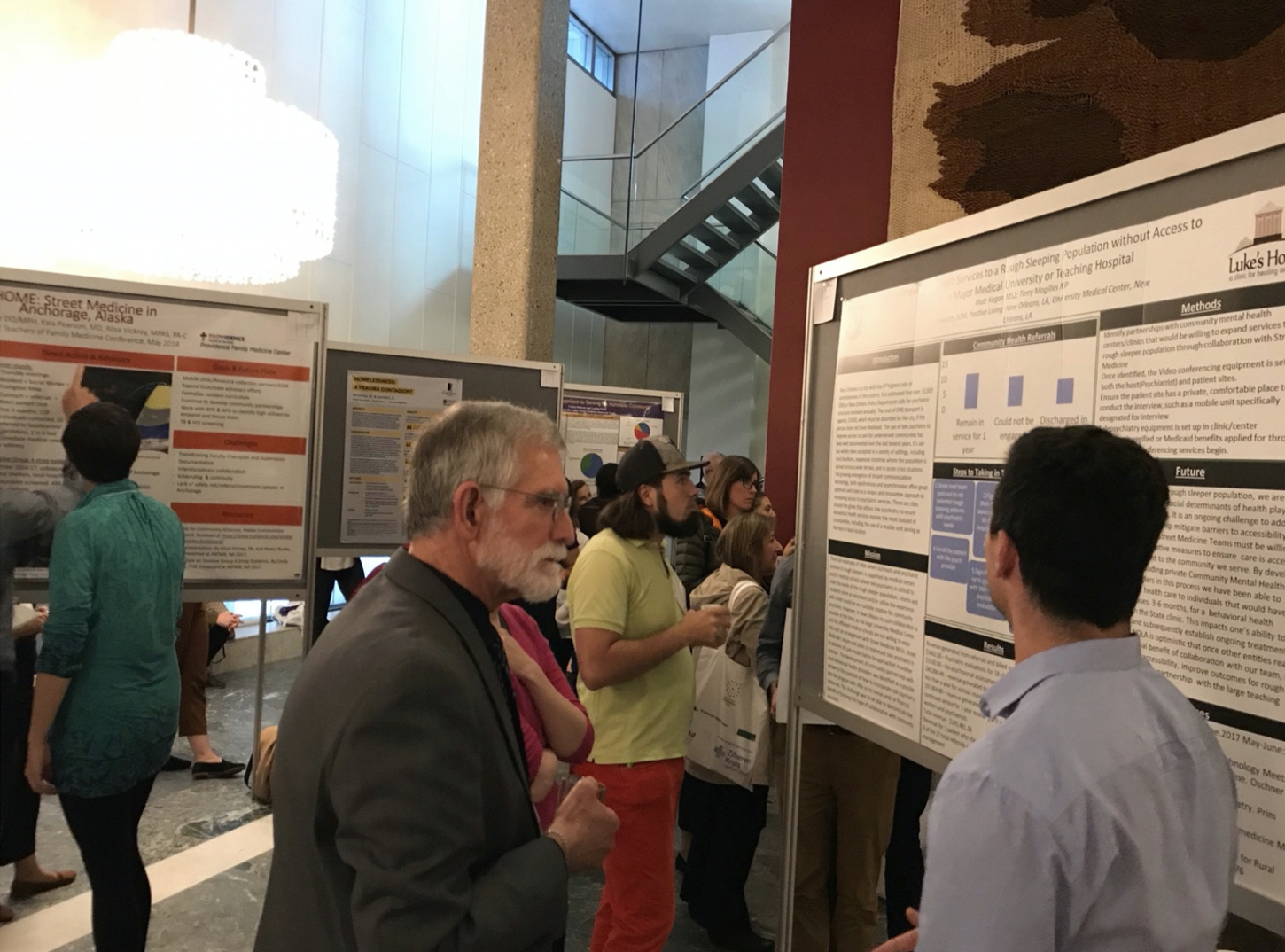 Perhaps the most moving speakers were those with lived experience who either in panels or alone courageously shared with us the reality of survival on the streets. Who will forget the testimonies of Willy Mackey in San Jose, or Roberto in Allentown, or the refugee women’s poetry group who made us all cry, or our own board member Joe Benson? Their wisdom and guidance were priceless. The participation by those with lived experience has increased but we continue to work improve their representation.
Perhaps the most moving speakers were those with lived experience who either in panels or alone courageously shared with us the reality of survival on the streets. Who will forget the testimonies of Willy Mackey in San Jose, or Roberto in Allentown, or the refugee women’s poetry group who made us all cry, or our own board member Joe Benson? Their wisdom and guidance were priceless. The participation by those with lived experience has increased but we continue to work improve their representation.
True to our initial hope, students of all disciplines have joined the annual meetings. Typically, many of the poster presentations have been student projects that present new models of care with demonstrated positive outcomes. We noticed more and more “student-initiated” and “student run” street medicine programs so we worked to connect them. Eventually, this led to the establishment of the Street Medicine Institute Student Coalition that was launched at the 2017 Allentown symposium. Student Brianne Feldpausch spearheaded that momentous occasion. This highly motivated and organized group now has their own global presence and a specific track at the annual meetings. They, in turn, go back to their academic institutions and demand a greater focus on social justice and inclusion.
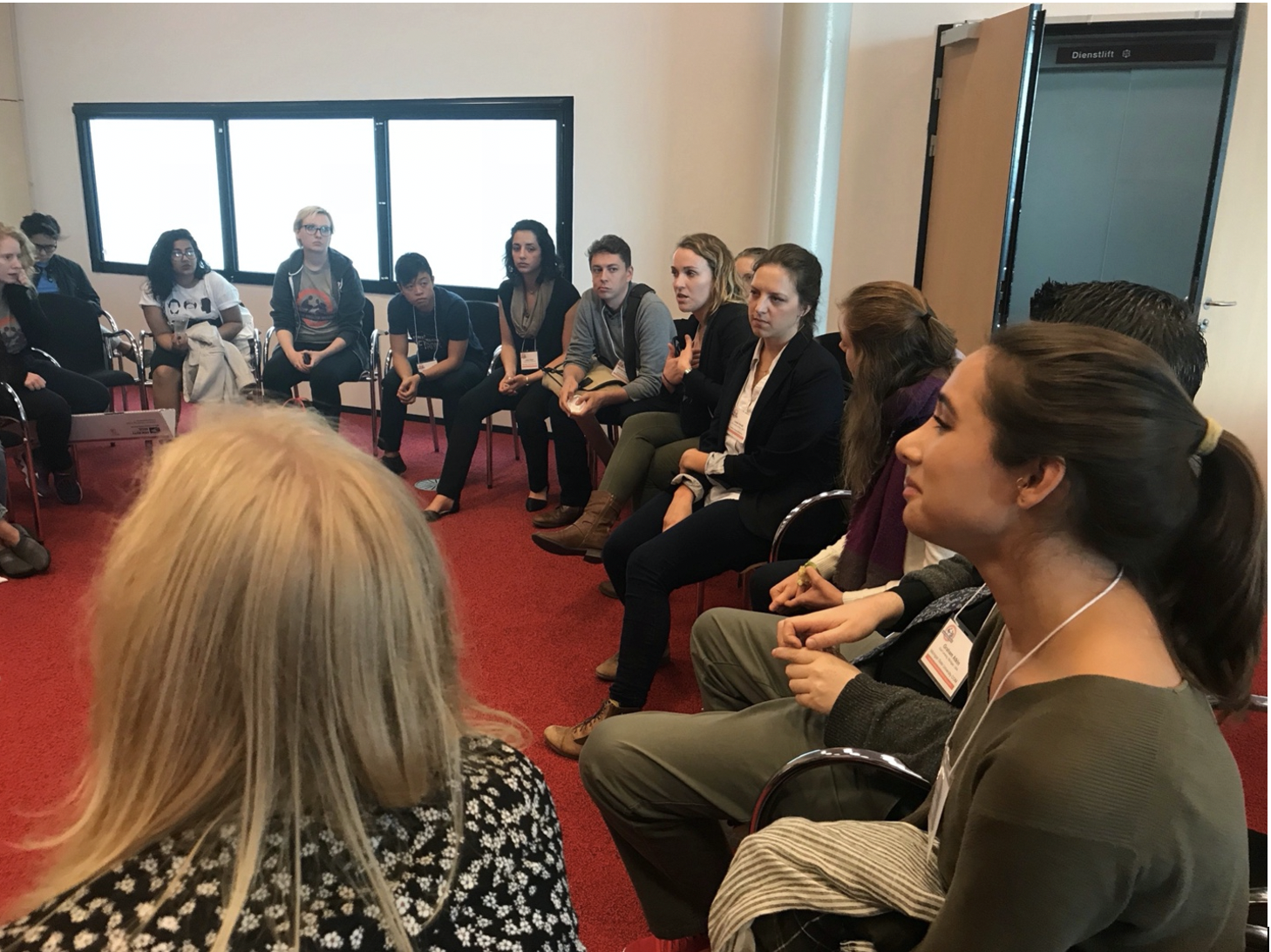 When we talk about our past symposiums, though, we always acknowledge that the best part is the time we share privately with each other in the halls, during meals and over drinks. This is where we open up and talk about the deeper meaning of our work. We tell stories and laugh harder than we have the whole year. We dream and we scheme and we know we are not alone.
When we talk about our past symposiums, though, we always acknowledge that the best part is the time we share privately with each other in the halls, during meals and over drinks. This is where we open up and talk about the deeper meaning of our work. We tell stories and laugh harder than we have the whole year. We dream and we scheme and we know we are not alone.
And so, we now look forward to our 18th International Street Medicine Symposium this September in Toronto. This will be our first symposium in Canada, and it should be incredible. The Toronto street medicine community has world class leaders and much to teach us. They have patiently worked with us for three years as we had to repeatedly reschedule through the pandemic period. Many in our global community have told us how much they are looking forward to seeing everybody in person so we believe it will be a tremendous event. Once again, we thank Liz Frye and other volunteer board members who have worked so many hours to make it all happen. We thank our recent past board chair, Irene McFadden and past vice-chair Brett Feldman who have given so much of their time and talent. We welcome our new board chair Steve Perry, vice-chair Liz Frye, and our new Executive Director as we move forward!
We look forward to seeing everyone who can make it this year. The vision is more important than ever. The heartbeat is stronger than ever. May we all have a fantastic experience, and may we be worthy of those whom we serve.
With respect and in solidarity,
Jim Withers
Meetings to date
Pittsburgh 2005, Santa Barbara 2006, Houston 2007, San Juan 2008, Atlanta 2009, Los Angeles 2010, Philadelphia 2011, Salt Lake City 2012, Boston 2013, Dublin 2014, San Jose 2015, Geneva 2016, Allentown 2017, Rotterdam 2018, Pittsburgh 2019, Virtual 2020, Virtual 2021, Toronto 2022


